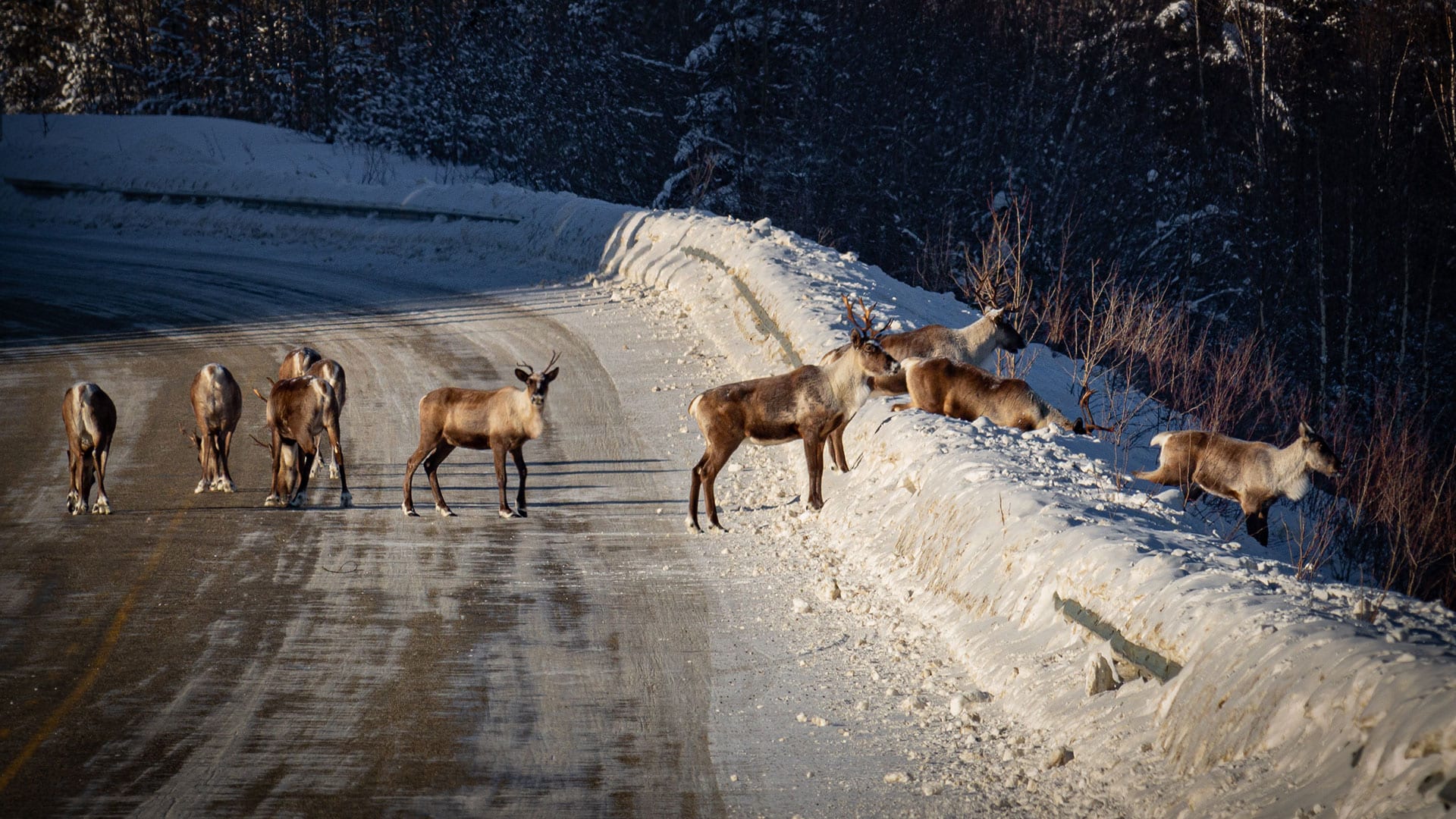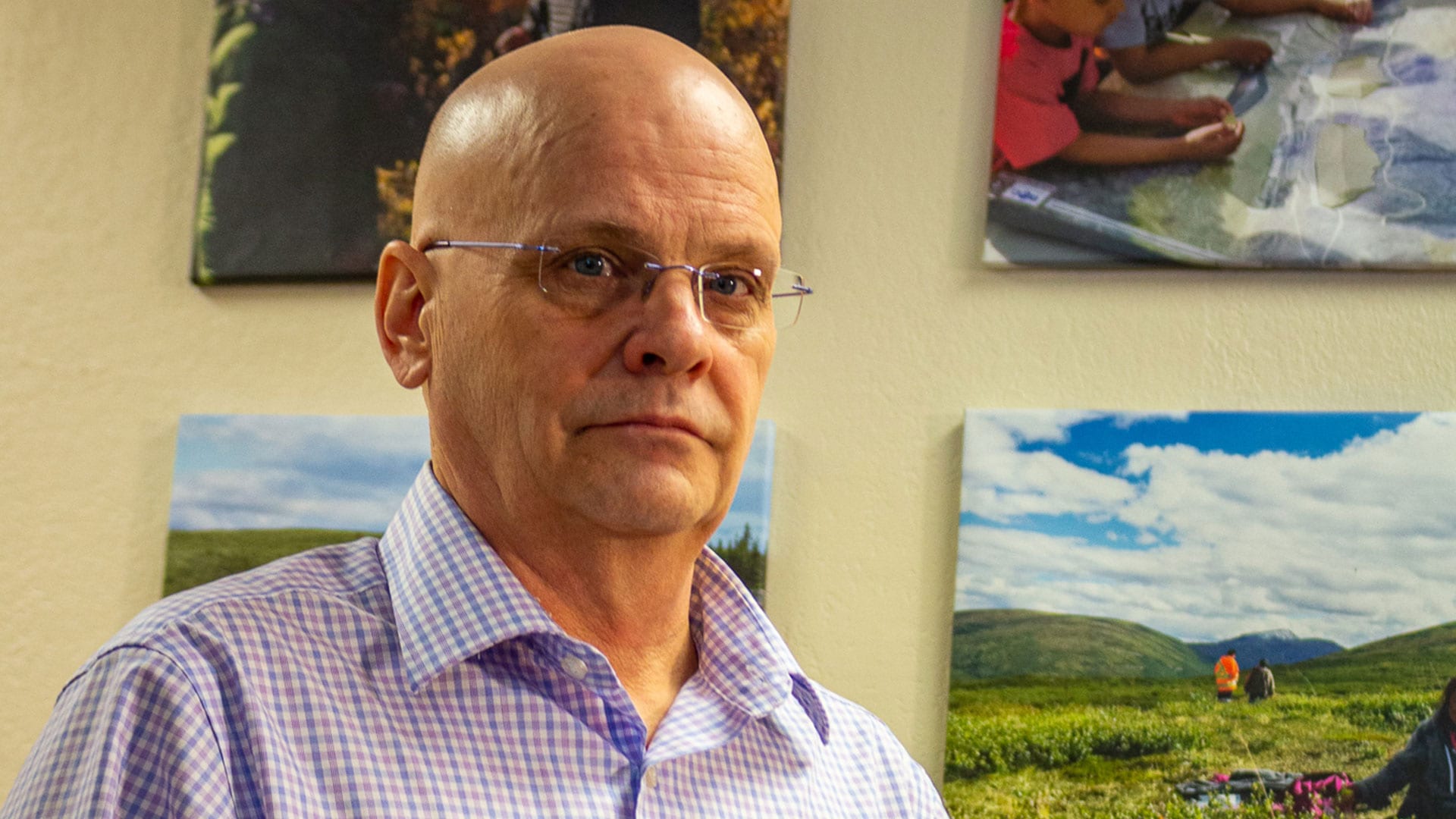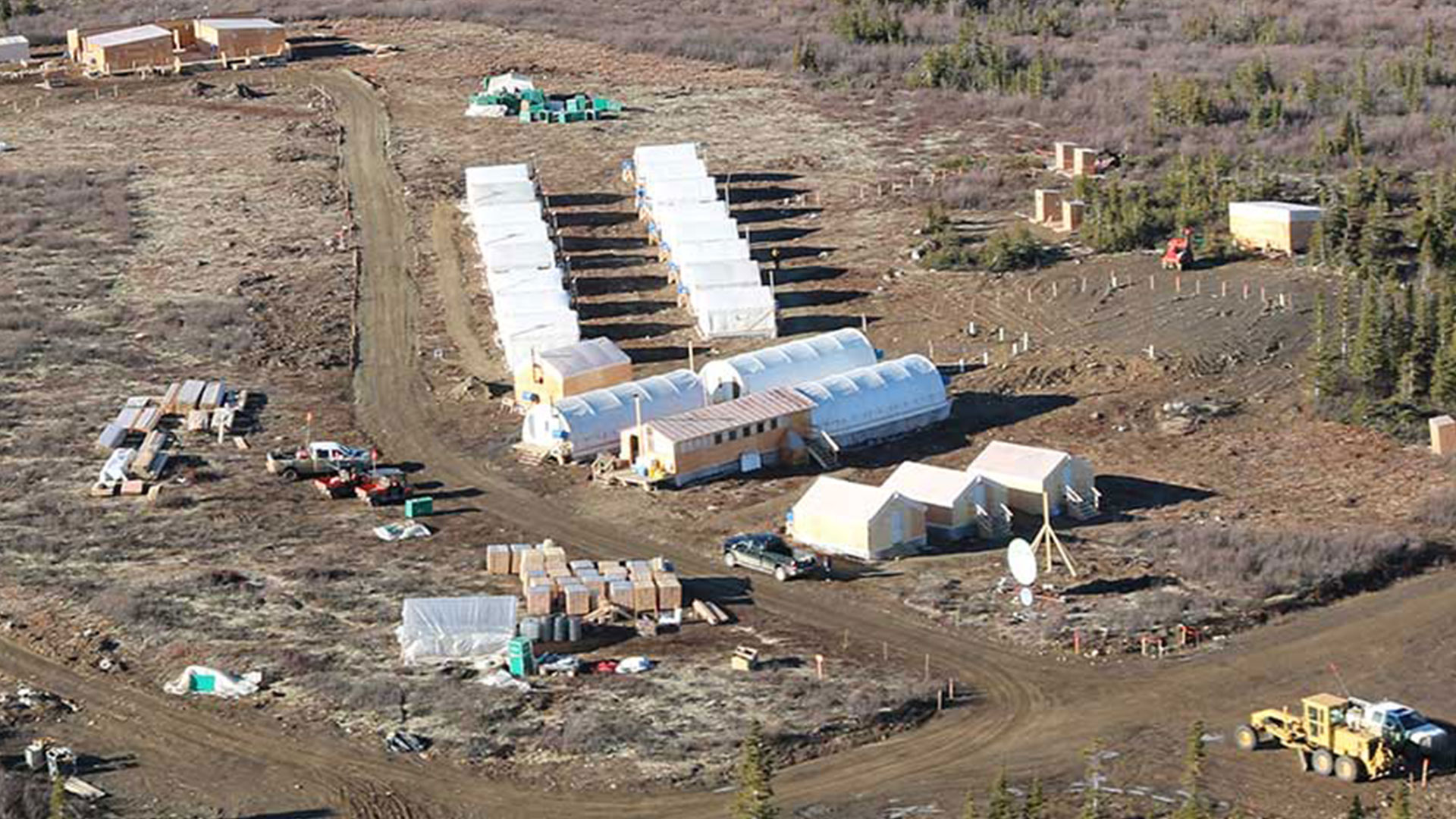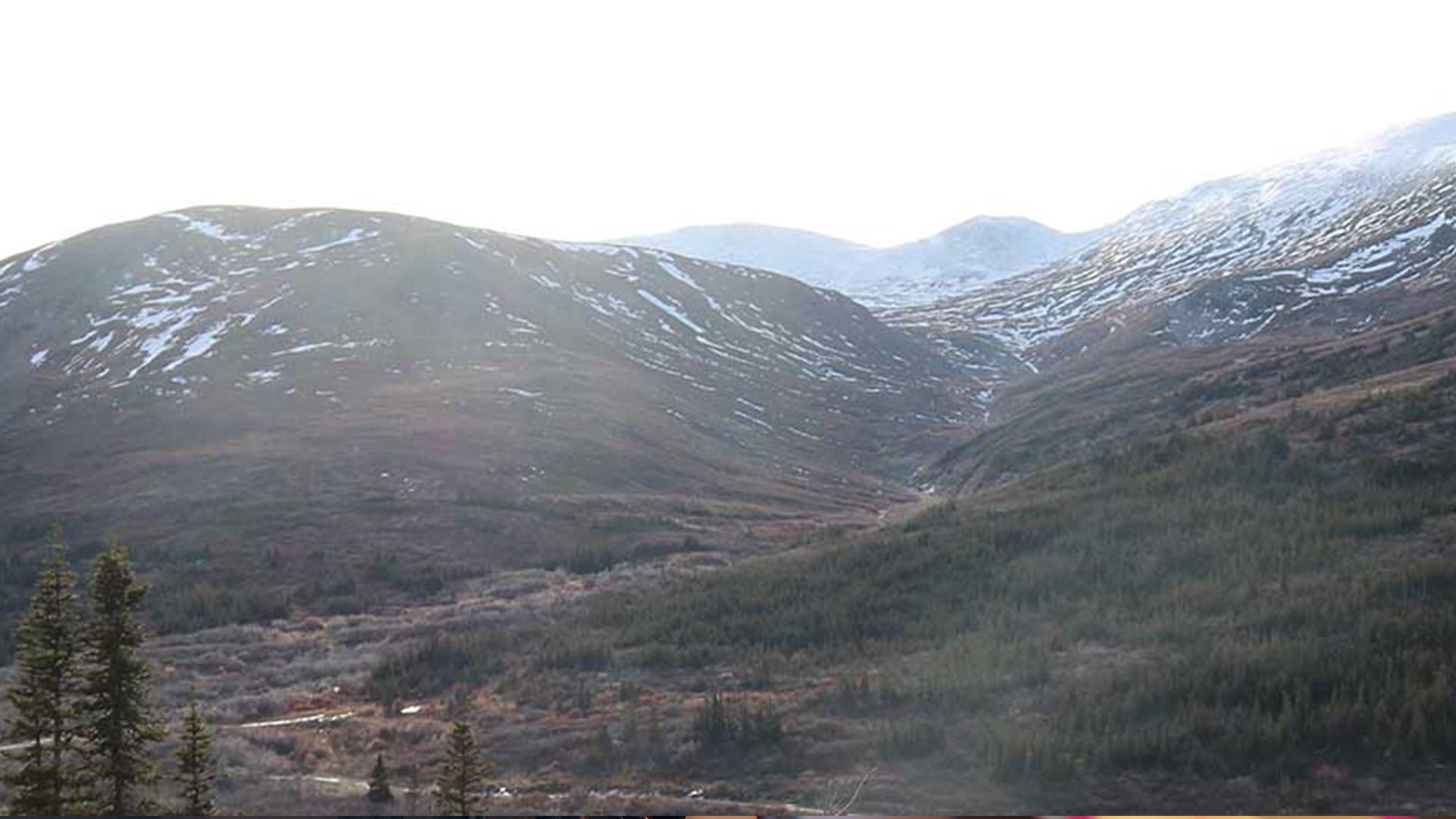Nestled within the northern flank of the Pelly Mountain Range 115 kilometers southeast of Ross River and 260 kilometers northwest of Watson Lake, Yukon, lies a stretch of land that’s been used by the Kaska people since time began.
Still referred to by some Kaska as nature’s “grocery store,” it’s a traditional area tied to the Finlayson caribou herd during their calving and rutting seasons, while also acting as their migration corridors.
“It’s our homeland,” says Ann Maje Raider, who is a Kaska member of Liard First Nation (LFN) in Watson Lake.
“It’s sustained us. It’s sustained our people.”
The land is also a place teaming with millions of pounds worth of mineral potential and may soon be home to a $381-million dollar mining project.
The Kudz Ze Kayah (KZK) is a proposed open pit mineral mine. ‘Kudz Ze Kayah’ means land of the caribou in the Kaska language.
The KZK will primarily be a silver-zinc mine. A 2019 feasibility study noted an estimated 7.8 million ounces annual production of silver and 235 million pounds of zinc, making it a global top twenty producer of the minerals if it enters production.
Lead, zinc, gold and copper will also be produced.
The company behind the KZK, BMC Minerals, bought the property from Teck in 2015. It put forward its request to build the mine in 2017.
The KZK will have a 10-year mine life which is likely to be extended if drilling shows potential for more development. After closure, it will be followed by a 26-year reclamation project.
Pending permitting, the mine could be in production as soon as 2023.
It’s a possibility that’s raising alarm amongst Kaskas in Watson Lake and Ross River who don’t want to see the area succumb to industry.
Raider says the KZK could spell the end for the Finlayson herd, which is in decline.
“What’s concerning is that herd has dwindled to about 1,500 caribou from a herd that used to be hundreds of thousands at one time.”
“I am really opposed to the mine,” she says.
No harm to caribou says mine

But unlike previous mines in Kaska territory, the company behind the KZK says it can – and will – do things differently.
“We really want to set the bar at mining,” says Allan Nixon, BMC’s vice-president of external affairs.
“People are very clear that if you build your mine we want it built right, and we’ve said obviously we want to do it right. Actually we’ve said we want to do it better than right, we want it to be something that sets the bar for everybody else.”
Nixon says BMC is doing extensive research and monitoring of the area to make sure local wildlife and the environment won’t be impacted, and that the project’s site is not close the herd’s calving area.
“It’s a calving area, but the footmark of where we’re working is not normally that,” he says.
“You’re going to see caribou wander through the area, absolutely as they migrate and move through, but we think we can mitigate potential impacts around that as well.”
The company also plans to schedule construction activities during periods when the herd will be less reliant on habitat close to the project.
Nixon says BMC has also made efforts to protect the caribou which it hasn’t gotten credit for, like diverting an access road to prevent ore trucks from colliding with the herd through its winter range.
But despite BMC’s efforts, Raider’s not convinced.
“They’re saying they can mitigate, but, there’s no way for us to know that we’ll have any certainty that what mitigation they do is going to give us any comfort that the caribous going to last.”
Mine to have aggressive reclamation policies

Raider says many Kaskas are weary of the KZK due to the negative legacy resulting from previous mines on Kaska territory like the Ketza mine, which was abandoned, and Cantung mine, which went bankrupt.
Both mines have caused environmental damage and the cleanup passed off to taxpayers to deal with.
Faro mine near Ross River, which was in operation from 1969 until 1998, is believed to be Canada’s most polluted mining site. Its reclamation project is expected to start next year, and will require a massive cleanup effort costing more than half a billion dollars.
LFN Elder Leda Jules says the damage from the mines has been “heartbreaking.”
“When I was growing up, we were never allowed to pull anything; flowers, trees, branch; ‘everything’s made for something grandma used to say.’ You do not take anything just because you want to.’”
“Now go back and look at the mess they left in Faro,” she says.
Nixon says he understands the Kaskas’ concerns and that the KZK will be different.
“If you look around at some of the environmental legacies they’ve been dealing with, there hasn’t been a great experience,” he says.
“We recognize that, which is why we’ve committed to setting the bar and setting the standard.”
Nixon says the KZK will have aggressive reclamation policies in place before the mine even opens.
“We’ll start reclamation the day after we start construction, basically. Everything we do is designed to progress that reclamation as we go forward,” he says.
Over a course of several years, Nixon says the open pit will gradually be filled back up, and will eventually be turned into a lake.
The reclamation plan also includes active site monitoring for several years once the mine ceases production and the re-introduction of native plants and trees to restore the area to its pre-mining state. BMC has hired RRDC’s Dena Cho Environmental to collect seeds for the reclamation efforts.
“Pick and shovel” jobs a concern
Employment at the mine is another concern for Raider.
With few economic opportunities in Watson Lake and Ross River, the KZK will likely employ many Kaska from both communities. BMC states it plans to employ 500 locals with construction jobs and will employ 350 once the KZK is in operation.
Raider says false promises have been made before from mining companies who reap the profits from the land while local Kaska’s are left with “pick and shovel jobs” with no room for advancement.
“We’re not equal in the mining companies at all,” she says. “Although you’re promised, you know, so much at the mine. They come in say ‘oh we’re going to give you jobs and you’re going to have the first feasible contracts.’ You know how many mines we’ve had in our backyard?
“So at the end of the day, who benefits? Who loses? We do.”
But Nixon says that won’t be the case with the KZK.
He says there will be good paying, long-term reclamation jobs available and BMC plans to employ many Kaskas in management positions.
BMC is also offering a Kaska scholarship program aimed at employing Kaska youth at the mine. The program provides financial assistance to Kaska students pursuing post-secondary and has supported over 100 students since its inception in 2016.
Some scholarship winners are now employed with BMC at the KZK site conducting environmental monitoring activities.
“Our rationale for that was the Kaska told us at the beginning before we even purchased the property they didn’t want to have jobs on the shovels,” Nixon says.
“(Kaskas have told us) ‘we want to be in management, we want to be in positions of running the mine.’ And so we said ‘okay how do we do that?’ And one way is through education, obviously.’”
Nixon says Kaska employees will be able to monitor BMC to make sure its following through on its promises.
“That’s the kind of effort it takes, I think, to ensure that we’re not just paying lip-service to wanting people involved, we do want them involved and we want them participating,” he says.
Mary Caeser, a Kaska elder from LFN, applauds BMC’s commitments on providing opportunities to Kaska youth.
“I believe they’re helping the Kaska people with jobs because there’s a lot of poverty in our community, and I’d like to see our people get ahead,” she says.
“It will be good for the young people to move forward.”
Mine could incite sexual violence says women’s society

Perhaps one of the most pressing issues for Raider, who is the executive director of the Liard Aboriginal Women’s Society (LAWS), is violence against Kaska women at the KZK site.
Last year, Raider conducted meetings in Watson Lake and Ross River regarding the KZK where Kaska women were invited to talk about the historical violence that’s taken place in mines. She says “primarily 98 per cent” of women were opposed to it.
She says mines and their accompanying “man camps” – temporary housing facilities constructed for predominantly male workers – have historically been a source of harassment, sexual violence and racism for Kaska women.
She says in the past it was common for miners to come into Kaska communities under the influence of alcohol and abuse Kaska women, often causing young Kaska women and girls to hide in the bush when they heard miners’ cars approaching.
It’s violence that’s affected Jules personally with the Cassiar asbestos mine in northern British Columbia.
“My sister was abused in 1963 by a person out of the mine from Cassiar. He left her to freeze to death. And she did,” she says.
“I don’t want to see our young girls and our young people abused. I say that because it’s very painful.”
Raider says mining companies of the past have also failed to incorporate effective zero tolerance policies, resulting in rampant sexual harassment and violence.
“The women often don’t feel safe coming forward because they feel they’re going to be ostracized and they need a job, right? A lot of women don’t report it or they don’t want to say anything about it.”
Kendra MacMillian, who is conducting research on mining and First Nations women within Kaska territory on behalf of the federal government, says discrimination is still happening.
She says while research indicates some women are reporting pleasant working conditions in mining, others are still recounting tales of unequal pay, intimidation and sexual harassment.
She notes lack of education and few job opportunities in their communities leaves many women working at mines “feeling stuck.”
“This is ongoing in 2021 and I don’t know why this would surprise any of us. A lot of stuff happens that we don’t talk about or hear about because (Kaska women) have no voices,” she says.
But Nixon states the KZK will have strong sexual harassment policies in place, as well as cultural awareness training and access to community supports.
BMC is also planning to have a mentoring program where employees can go to an elder if they don’t feel comfortable talking to management or HR.
Nixon notes there was an issue on site a few years ago where racist comments were being made by an employee and that they were immediately terminated.
“(We want to make) it a place coming up in school that girls can say ‘I can have a career at KZK, or I could have a career in mining,’” he says.
“They’re not going to hear that if all they hear is how awful it is to work in that place.”
MacMillian says it’s a step in the right direction.
“This is a start, but we always have empty promises by everyone, by society, so I feel like we’re on the right track of those policies and procedures coming into play.”
Kaska chief calling for paniel review

Last October, the Yukon Environmental and Socio-Economic Assessment Board (YESAB), recommended the project go ahead with conditions to the territorial and federal government, who are its decision bodies.
The board found the project will impact water resources, traditional land use and human health and safety but provided 30 recommendations to mitigate risks.
But in January Fisheries and Oceans Canada and Natural Resources Canada sent the assessment back to YESAB, stating it was insufficient in regards to mitigation measures and that it did not properly incorporate LFN and RRDC’s rights in its finding to approve the project.
The federal government’s edict follows a letter addressed to Yukon Premier Sandy Silver and Minister of Northern Affairs Dan Vandal by LFN Chief Stephen Charlie, who did not respond to APTN’s requests for an interview.
In that letter, Charlie asserts YESAB failed to have the project be evaluated under the territory’s assessment act.
He also argues YESAB’s mitigation measures to protect the Finlayson herd are inadequate and that the KZK will interfere with Kaska harvesting rights. His letter calls for the KZK to either be rejected or to be forced to undergo a panel review, which is the most severe form of environmental assessment in the territory.
Panel reviews are administrative tribunals and entail public hearings. They are instigated only when a project is suspected to cause significant environmental repercussions or provoke considerable public concern.
Only one panel review has ever been initiated in the territory for the proposed Casino Mine near the community of Carmacks. That panel review was initiated in 2016 due to the sheer size of the mine as well as its potential effects on local caribou and is still in the preliminary stages.
On Tuesday, YESAB released its new decision document recommending the mine should go ahead with mitigations.
Two members of YESAB’s Executive Committee have determined that the project is likely to result in significant adverse effects but those effects can be mitigated, while two others determined that those adverse effects that cannot be mitigated, causing a deadlock.
As a result, the Executive Committee is required to reissue its October 2020 recommendation, concluding the screening stage of the KZK.
Considerations for a panel review were also mixed. Executive committee member Lara Cabott states “the concern is real, valid and severe but on consideration it does not reach the threshold of “significant public concern in the Yukon” to justify a Panel review.”
Meanwhile, member Lawrence Joe writes “Given the sensitivity of Kudz Ze Kayah to effects and the severity of those effects, especially as expressed in referral period comments, a determination that a panel is required is warranted. A panel would afford a better opportunity to address and remedy public concern regarding the project.”
The document does not state if a panel review will be put forward, though it does mention a review “could potentially produce information for an alternative recommendation.”
It’s now up to the federal and territorial governments to either accept, reject, or modify YESAB’s recommendations.
BMC expects that decision to be released in May.
Meanwhile, Raider remains hopeful a panel review will be the next course of action.
“In a perfect world, there would be no mine.”










